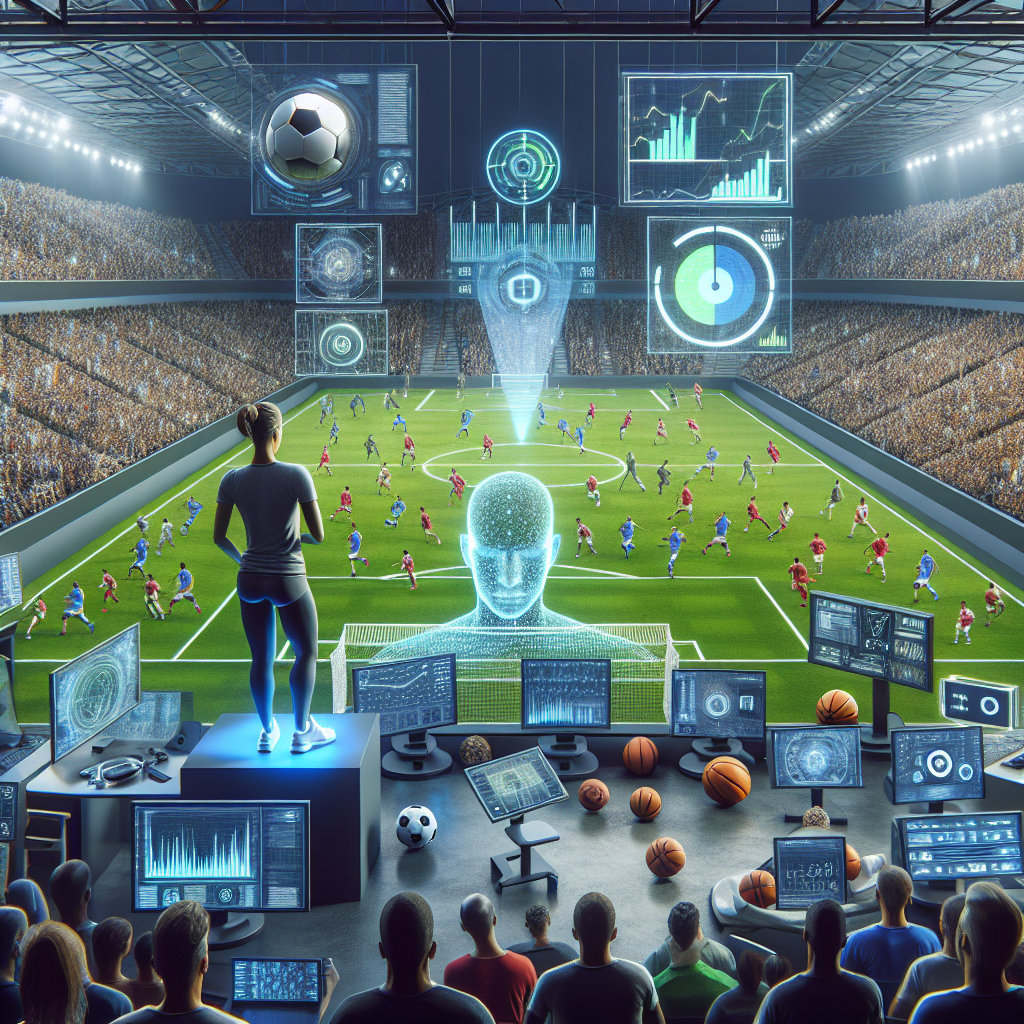The Role of AI in Talent Identification in Sports
In the world of sports, talent identification is a crucial process that helps teams and organizations discover potential athletes who have the skills and abilities to excel in their respective sports. Traditionally, talent identification has been a time-consuming and subjective process that relies on the observations and judgments of coaches and scouts. However, with advances in artificial intelligence (AI) technology, the role of AI in talent identification in sports is becoming increasingly important.
AI in sports has the potential to revolutionize talent identification by providing teams and organizations with the tools and insights they need to make more informed decisions about which athletes to recruit and develop. By analyzing vast amounts of data and using sophisticated algorithms, AI can help identify patterns and trends that may not be immediately apparent to human observers. This can lead to more accurate assessments of an athlete’s potential and can help teams uncover hidden talents that may have been overlooked in the past.
One of the key advantages of AI in talent identification is its ability to analyze performance data in real-time. By tracking an athlete’s movements and performance metrics during training and competition, AI can provide coaches and scouts with valuable insights into an athlete’s strengths and weaknesses. This can help teams identify areas for improvement and tailor training programs to maximize an athlete’s potential. Additionally, AI can help teams evaluate the performance of their own players as well as potential recruits, allowing them to make more informed decisions about which athletes to invest in.
Another important role of AI in talent identification is its ability to assess an athlete’s potential based on a wide range of factors. In addition to performance data, AI can analyze factors such as an athlete’s physical attributes, psychological traits, and injury history to determine their likelihood of success in a particular sport. This holistic approach to talent identification can help teams identify athletes who may have the right combination of skills and attributes to succeed at the highest level.
AI can also help teams identify talent at a younger age, allowing them to nurture and develop athletes from an early age. By analyzing data from youth competitions and training programs, AI can identify athletes who show promise and potential, giving teams the opportunity to invest in their development and help them reach their full potential. This can help teams build a pipeline of talent that can sustain their success over the long term.
In addition to talent identification, AI can also play a role in talent development. By analyzing an athlete’s performance data and providing personalized feedback and recommendations, AI can help athletes improve their skills and reach their full potential. This can lead to more consistent and sustainable performance, helping athletes achieve success at the highest level of their sport.
Overall, the role of AI in talent identification in sports is becoming increasingly important as teams and organizations seek to gain a competitive edge in a highly competitive and fast-paced industry. By leveraging the power of AI technology, teams can make more informed decisions about which athletes to recruit and develop, leading to a more effective and efficient talent identification process.
FAQs
Q: How does AI in talent identification work?
A: AI in talent identification works by analyzing vast amounts of data, including performance metrics, physical attributes, psychological traits, and injury history, to determine an athlete’s potential and likelihood of success in a particular sport. By using sophisticated algorithms, AI can identify patterns and trends that may not be immediately apparent to human observers, leading to more accurate assessments of an athlete’s potential.
Q: What are the advantages of using AI in talent identification?
A: Some of the advantages of using AI in talent identification include the ability to analyze performance data in real-time, assess an athlete’s potential based on a wide range of factors, identify talent at a younger age, and provide personalized feedback and recommendations for talent development. AI can help teams make more informed decisions about which athletes to recruit and develop, leading to a more effective and efficient talent identification process.
Q: How can AI help teams build a pipeline of talent?
A: AI can help teams build a pipeline of talent by analyzing data from youth competitions and training programs to identify athletes who show promise and potential at a young age. By investing in the development of these athletes, teams can help them reach their full potential and sustain their success over the long term. This can help teams build a strong foundation of talent that can help them compete at the highest level of their sport.
Q: What are some of the challenges of using AI in talent identification?
A: Some of the challenges of using AI in talent identification include the need for high-quality data, the potential for bias in algorithms, and the complexity of analyzing multiple factors to determine an athlete’s potential. Additionally, there may be concerns about privacy and data security when using AI to analyze personal and sensitive information about athletes. It is important for teams and organizations to address these challenges and ensure that AI is used ethically and responsibly in talent identification processes.

